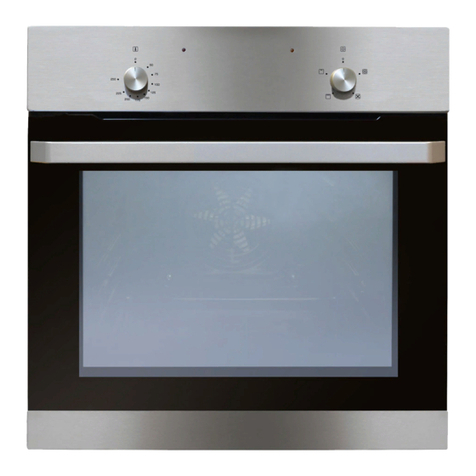4
• Do not grill food containing fat without using the grill pan
grid.
• Do not cover the grill pan grid or the oven walls with
aluminium foil.
• Do not use the oven tray for roasting.
• Do not perform maintenance or cleaning of the oven
without first switching off the electricity supply. If the
oven has recently been used, allow to cool.
• Do not place hot enamel parts in water. Leave them to
cool first.
• Do not allow vinegar, coffee, milk, saltwater, lemon or
tomato juice to remain in contact with enamel parts.
• Do not use abrasive cleaners or powders that will
scratch the surface of the enamel or stainless steel.
• Do not attempt to repair the internal workings of your
oven.
• Do not cover the oven floor with aluminium foil.
Before First Use
• The decorative metal finish of this appliance has been coated
with a preservative to protect it during transport and storage. This
should be removed during installation by using a non-abrasive
stainless steel cleaner, and dried thoroughly afterwards. Always
follow the instructions given with the cleaner being used.
• Before using the oven for the first time we recommend that you
clean the oven with soapy water, rinse carefully and then heat on
each of the programmes on page 5 at maximum temperature for
the specified time. An unpleasant smell may be produced, caused
by grease remaining on the oven elements from the production
process.




























